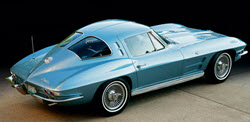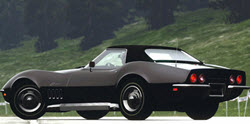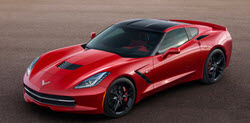The role of Zora Arkus-Duntov, the “Father of the Corvette.”
The Early Life of Zora Arkus-Duntov
Zora Arkus-Duntov was born on December 25, 1909, in Brussels, Belgium. His birth into a family of engineers set the stage for a lifetime devoted to innovation and technical mastery. Both of his parents contributed to fostering an environment where engineering and mechanics were not only discussed but celebrated. This nurturing atmosphere profoundly influenced young Zora. As the family relocated to Leningrad, these familial influences ensured that Zora was not only exposed to the concepts of mechanics but also encouraged to imagine their practical applications. This early foundation would play a critical role in shaping his future contributions to the automotive industry.
As a young man, Zora pursued formal education that was reflective of his interests and his parents’ legacy in engineering. He took his first academic steps at the Institut Supérieur de l’Aéronautique et de l’Espace in Paris. His time there was marked by rigorous training, exposure to cutting-edge aeronautical concepts, and interactions with peers who would become future leaders in engineering domains. This institute equipped him with both theoretical knowledge and practical insights.
Later on, Arkus-Duntov expanded his academic pursuits by attending the Polytechnic University of Berlin. Here, he immersed himself in a diverse educational environment. This second phase of his education was instrumental in refining his technical skills and broadening his understanding of engineering principles, enabling him to work across different branches of mechanical and automotive engineering.
Career Beginnings and World War II
The 1930s signaled the start of Zora Arkus-Duntov’s professional journey, with a strong focus on aviation projects. The era was one of rapid advancement in aviation technology, and Zora found himself entrenched in groundbreaking work. His involvement in this sector not only showcased his expertise but also allowed him to contribute to areas that were at the forefront of technological progress.
As World War II unfolded, Zora joined the French Air Force. This period saw his skills being utilized in efforts that were critical to the war. His time in the military would also instill a sense of discipline and the importance of performance under pressure, traits that would serve him well in his post-war career. With the end of the war, Zora, alongside his brother Yves, migrated to the United States. This move marked the beginning of a new chapter in Zora’s professional life.
In the United States, Arkus-Duntov began working in the automotive component sector. This experience was pivotal, providing him with in-depth knowledge of automotive systems and allowing him to forge valuable connections within the industry. This foundation set the stage for further advancements and the development of a career that would leave an indelible mark on automotive history.
Joining General Motors
The next significant milestone in Zora Arkus-Duntov’s career came with his employment at General Motors in 1953. By joining the Chevrolet Division as an assistant staff engineer, he entered a segment of the industry primed for innovation. At this juncture, the Chevrolet Corvette had recently been introduced, yet initial responses were lukewarm, as the car remained underpowered and failed to meet the expectations of sports car enthusiasts.
Upon his arrival at GM, Zora identified the vast potential that the Corvette had, coupled with the modifications needed to transform this potential into reality. His fresh perspective and engineering acumen quickly established him as an influential figure within the division.
Innovations and Improvements
Understanding the Corvette’s position in the market, Zora Arkus-Duntov embarked on a mission to enhance what was not merely a vehicle, but a symbol of American automotive engineering. One of his most significant contributions was integrating the V8 engine into the Corvette, replacing the original inline-six. This change was revolutionary, dramatically improving the car’s power and ensuring it could compete robustly with its European counterparts.
In addition to engine upgrades, Arkus-Duntov introduced several engineering advancements such as fuel injection and aerodynamic improvements. These enhancements were crucial in redefining the Corvette as a leading symbol of American automotive craftsmanship. Through these changes, the Corvette’s identity transformed into that of a genuine sports car, celebrated both in the United States and in international circles.
Racing and Testing
Zora Arkus-Duntov’s belief in the symbiotic relationship between racing and automotive development was reflected in his pursuits. Racing wasn’t merely a sport for Zora; it was a laboratory. By participating in racing events, he not only tested the limits of engineering boundaries but also used the data derived from these experiences to enhance Corvette designs. He saw racing as an opportunity to push innovation, and his famous “Duntov Cam” exemplified this intersection of racing insight and engineering genius.
His active participation and insights were undeniable. Racing provided both a testing ground for performance and reliability, further shaping Corvette’s evolution. Zora’s approach in blending racing with design improvements placed the Corvette in an advantageous position amidst growing competition.
Legacy and Recognition
Zora Arkus-Duntov retired from General Motors in 1975, but his work had already altered the trajectory of not only the Corvette but the sports car landscape as a whole. By embedding innovation within the core of Corvette’s identity, he ensured its recognition as an iconic sports car, renowned for its power and performance.
Throughout his career, Zora’s contributions to the automotive industry were celebrated through various accolades, none more significant than his induction into the Automotive Hall of Fame. Such recognition is a testament to the enduring impact of his vision and expertise.
The legacy of Zora Arkus-Duntov continues to influence automotive engineering, particularly in sports car design. His work established a blueprint for future developments, merging design and performance into a harmonious identity. The Corvette, under his influence, became more than a car; it transformed into a heritage symbol of engineering brilliance. His pioneering spirit and innovative approach remain essential elements of Corvette’s ongoing story, a testament to the power of vision and skill in shaping the future.



